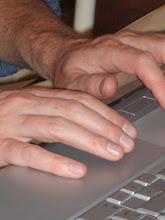UBS Soundscapes is a long standing concert series that takes place at the ever so attractive LSO St Luke's. With its emphasis on informality (you can drink alcohol basically) and musical eclecticism, most of the artists hitherto have been drawn from the jazz and world music circuit. Less in evidence have been classical performers which was partially rectified last night with a concert given by the LSO Chamber Ensemble.
Entitled 'Beethoven Plus', it allowed several of the orchestra's principals to strut their stuff in small ensembles and as soloists, an opportunity if ever there was for some unlikely corners of the repertoire to be explored. Chris Richards gave an immaculate account of Stravinsky's Three Pieces for Clarinet Solo which was preceded by a work for double bass, violin and piano by the little known composer Bottesini. It is, I'm told, a bit of a sacred cow in the double bass world that demands deft movement over the strings' harmonics. The soloist, Rinat Ibragimov certainly didn't disappoint, his performance getting the biggest cheer of the evening.
Beethoven's Septet in Eb rounded off an interesting night out, perhaps one for the musically curious than the layman. And if at times it felt a little like a school concert - one or two of the players need to work on their public speaking - it is hopefully the start of more regular appearances by this fine group of musicians.
Friday, 18 March 2011
Monday, 7 March 2011
Madam Butterfly/Royal Albert Hall
Puccini's arias have been the mainstay of every passing crossover act for so long it's easy to forget how masterful his complete operas are. I've got Raymond Gubbay to thank for this. What? The Gubbster, isn't he one of the bad guys, you know, singers with microphones, fireworks etc? Well, yes in some people's eyes, he's not exactly Mr High Brow, and I for one am rather pleased he isn't; it takes chutzpah to transfer a well loved work like Madam Butterfly from the opera house into the cavernous Royal Albert Hall AND make it work.
The fact is if you can use the Royal Albert Hall space effectively, as Gubbay and his team have, it gives opera an entirely new dimension. For a start, you can see it in the round, which can't fail to bring audiences closer to the action. And being the size it is, the RAH arena invites a greater scope for visual ambitions, in this case a large water garden (yep, real water) that surrounds Butterfly's house. But it's what this production achieves aurally that really hits home, in particular the humming chorus in Act II which wafts down magically from the gallery into a dimmed auditorium with only Chinese lanterns for light. Beat that Royal Opera.
There is a price to pay for this. The singers are miked-up and while this is a crime too far for some opera-goers, I don't see how it can be avoided in a large venue like the Royal Albert Hall. Sure, you do lose some purity of tone and at times a certain shrillness creeps in, particularly at the top end of the singers' range. On balance though, the theatrical gains far outweigh any reservations I have about the whole microphone issue.
So, Mr Gubbay, when are you going to do The Ring?
The fact is if you can use the Royal Albert Hall space effectively, as Gubbay and his team have, it gives opera an entirely new dimension. For a start, you can see it in the round, which can't fail to bring audiences closer to the action. And being the size it is, the RAH arena invites a greater scope for visual ambitions, in this case a large water garden (yep, real water) that surrounds Butterfly's house. But it's what this production achieves aurally that really hits home, in particular the humming chorus in Act II which wafts down magically from the gallery into a dimmed auditorium with only Chinese lanterns for light. Beat that Royal Opera.
There is a price to pay for this. The singers are miked-up and while this is a crime too far for some opera-goers, I don't see how it can be avoided in a large venue like the Royal Albert Hall. Sure, you do lose some purity of tone and at times a certain shrillness creeps in, particularly at the top end of the singers' range. On balance though, the theatrical gains far outweigh any reservations I have about the whole microphone issue.
So, Mr Gubbay, when are you going to do The Ring?
Subscribe to:
Comments (Atom)
